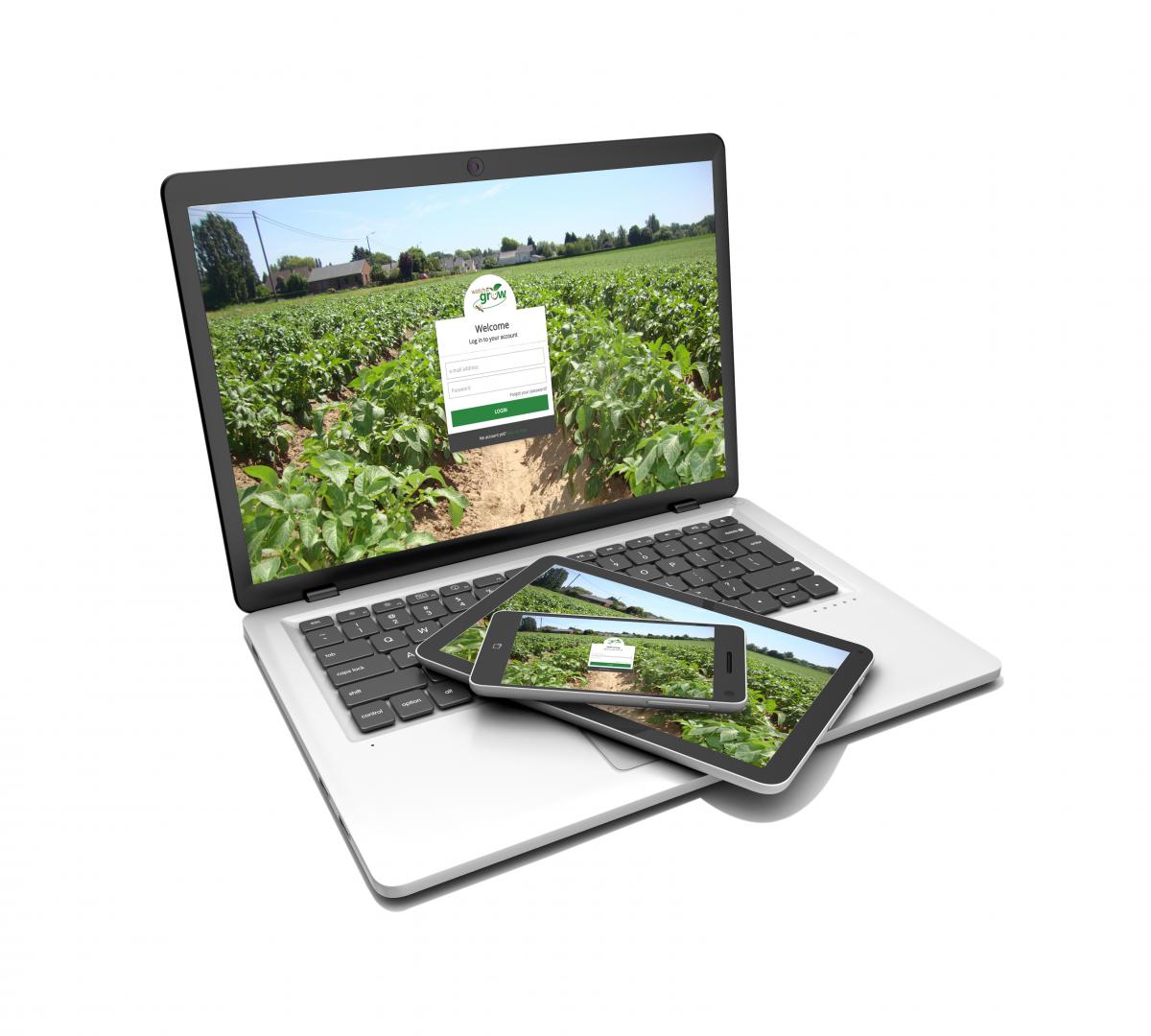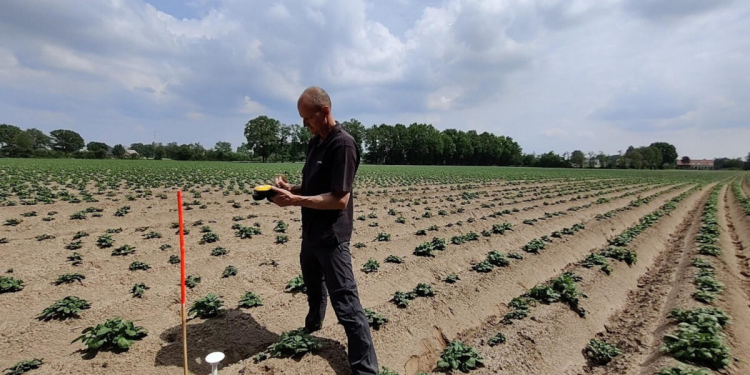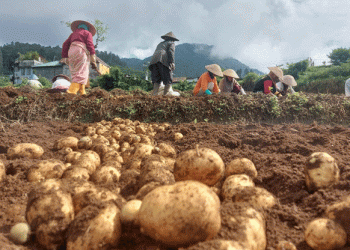CurieuzeNeuzen in de Tuin, the largest ever citizen research project in Flanders into heat and drought, is now also installing 500 smart sensors or ‘field daggers’ in various potato fields throughout Flanders to collect information about the microclimate on our potato fields.
Because we obviously do not only see the effect of dry and hot summers in our gardens, parks or public green spaces, CurieuzeNeuzen in de Tuin also conducts research into the impact of extreme weather conditions on the cultivation of potatoes.

Potatoes are particularly sensitive to extreme weather conditions. “They don’t like prolonged drought and heat, but they also don’t like extremely wet weather,” says Bart Deronde of research center VITO. “It is a crop that develops optimally in a typical Belgian weather type, varied, without extremes.” But in recent years we have seen more and more long periods of drought and heat, with the necessary consequences for our potato cultivation.
“In 2018 we had 30 to 40 percent less yield,” says Jean-Pierre Van Puymbrouck, chairman of Belpotato, the trade organization for the entire Belgian potato chain. “In 2019 there was a 5 to 10 percent loss, and last year we lost another 20 percent.” In addition, the quality of the potatoes is also under threat.
Broad partnership
Although CurieuzeNeuzen de Tuin focuses primarily on the effect of heat and drought in gardens, 500 smart temperature and soil moisture sensors are also being placed in various potato fields. The participating fields are spread across Flanders and were selected in consultation with the Institute for Agricultural, Fisheries and Food Research (ILVO), the interprovincial Test Center for Potato Cultivation (PCA vzw), INAGRO, de Hooibeekhoeve, Agristo and Clarebout. “This broad partnership shows that the entire industry is convinced of the need to deploy new technology as part of sustainable production that can withstand the climate of the future,” said the participants.
The ultimate aim of the CurieuzeNeuzen project is to bring the knowledge gained to the potato grower.
Live updates via WatchITgrow
The sensors measure very precisely, every 15 minutes, both the temperature and the soil moisture. The temperature is measured in 3 places; low to the ground at a height of 12 cm, at the soil surface and below the ground (in the top 10 cm). The soil moisture content is also measured here in the top layer of the soil. These detailed measurements will provide insight into the microclimate in which the potato plant grows for the first time.
All data is automatically uploaded daily via the Internet of Things into WatchITgrow.be , VITO’s online information CurieuzeNeuzen platform that assists farmers in monitoring their plots smoothly and efficiently. “Thanks to this information, the grower can intervene in time or make adjustments where necessary and sustainably improve production,” Deronde responds.

A unique dataset and soil analyses
Meanwhile, researchers are also working with the data to gain a unique insight into the microclimate on the potato fields. This is also combined with soil analyses, performed by the University of Antwerp. This will study the capacity of the soil to store carbon, as well as the presence of organic matter, which is crucial for soil health.
“The ultimate aim of the CurieuzeNeuzen project is to bring the knowledge that is gained to the potato grower so that he is able to respond better to hot and dry periods with targeted and objective information.”
Ongoing irrigation trials with various types of treated wastewater are being carried out to establish the impact on yield and quality of cauliflower, spinach and early potato. The trials are managed in highly controlled and monitored experimental fields. The long-term effects of wastewater on soil quality are also under investigation.
The timeliness of irrigation application is monitored in farmers’ fields. We combine soil moisture sensors, Copernicus Sentinel-2 satellite images, weather information and crop growth modelling to quantify supplementary irrigation needs and optimise productivity. Intensive campaigns are on-going to calibrate the crop model for early potato, spinach and cauliflower fields.









